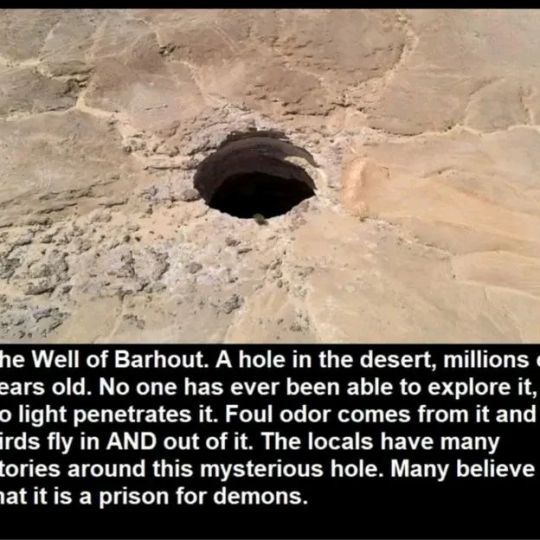Photo
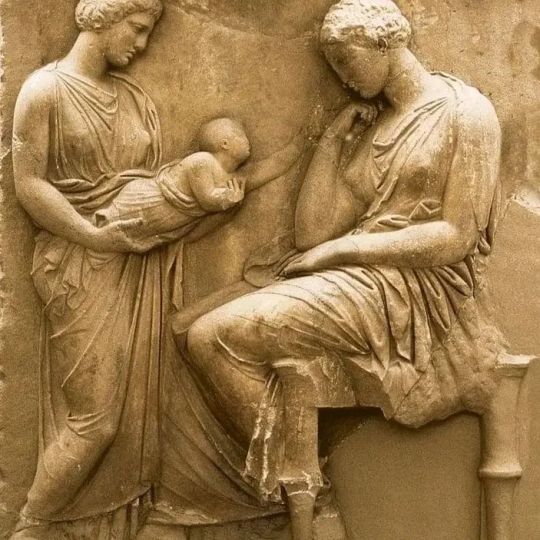
On this grave stele, you can see an Athenian young dead mother seated on a stool looking unemotionally at her son that is held by another standing woman. The infant extends his arms outstretched yet unable to touch his mother who does not react to her baby's dramatic gesture. This is a tragic contrast between the baby's passion to touch her mother and the mother's impassivity. They seem so close, and yet so distant from one another, as they both belong to different worlds. The name of the dead woman, Phylonoe, is recorded in the epigram carved on the epistyle that probably died in childbirth, 380 BCE National Archaeological Museum in Athens. https://www.instagram.com/p/CmdrxZsNGxv/?igshid=NGJjMDIxMWI=
0 notes
Photo
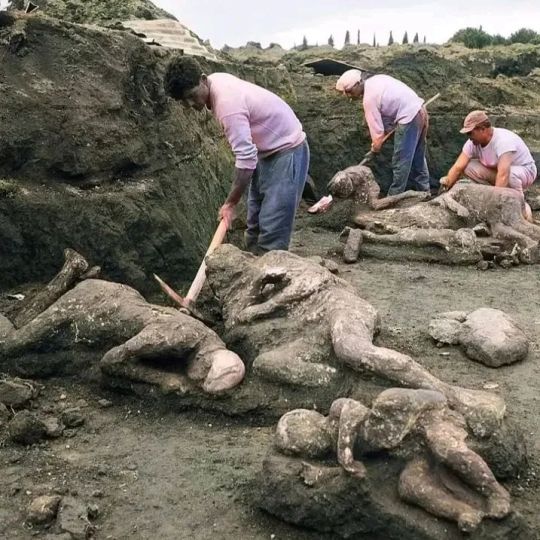
Pompeii, Italian Pompei, preserved ancient Roman city in Campania, Italy, 14 miles (23 km) southeast of Naples, at the southeastern base of Mount Vesuvius. Around noon on August 24, 79 CE, a huge eruption from Mount Vesuvius showered volcanic debris over the city of Pompeii, followed the next day by clouds of blisteringly hot gases. https://www.instagram.com/p/CmdmbDkNSMg/?igshid=NGJjMDIxMWI=
0 notes
Photo
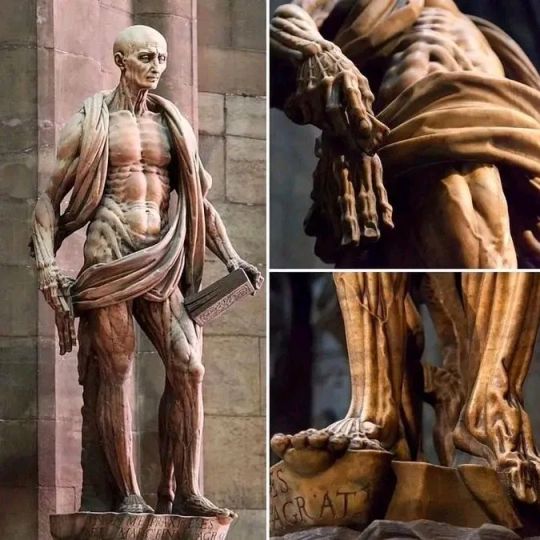
This statue depicts Saint Bartholomew, an early Christian martyr who was allegedly skinned alive. If you look closely, that's his dissected skin hanging around him. This stunning statute by Marco d’Agrate from 1562 CE, is currently on display at Duomo di Milano. https://www.instagram.com/p/CmcO7Uvt7A-/?igshid=NGJjMDIxMWI=
0 notes
Photo

Shoes invented and used in the 1920's by a cattle thief named ′′Crazy Tex Hazel′′ to hide footprints while stealing cows. Museum of Northeast Nevada https://www.instagram.com/p/CmXQH4KNEIO/?igshid=NGJjMDIxMWI=
0 notes
Photo
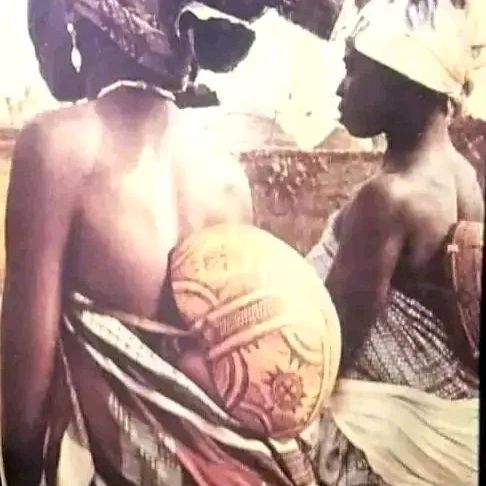
The Babur,Pabir/Bura people are found mostly in Borno and Adamawa state Nigeria. They are known for covering their babies' heads with calabashes in the past. This practice was documented in the Autumn 1970 issue of African Arts magazine. https://www.instagram.com/p/CmXOfdVtBhU/?igshid=NGJjMDIxMWI=
0 notes
Photo
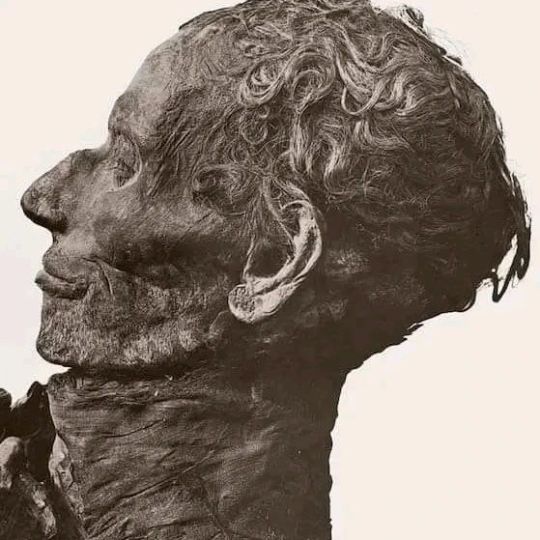
Mummy of Yuya, Tutankhamun's Great Grandfather The mummy of Yuaa is that of an old, white-haired man, 1 m. 651 mill. in height. His hair, now stained yellow by embaiming materials, was perfectly white at the time of his death. It is long and wavy — when straightened it is more than 11 centimètres in length. Unlike his wife he shows no pronounced tendency to baldness. His face is relatively short and elliptical, the total facial height being only 110 millimètres, whereas the bizygomatic breadth is 135 millimètres. His nose is prominent, aquiline and high bridged: at the same time the alae are wide, probably more so than in life, because the nostrils bave been dilated in the process of packing the nasal fossae with linen. The nose is 56 millimètres long and 36 millimètres wide (alar measurement). The bridge of the nose projects 2 centimètres in front of the canthi. The lips appear to be somewhat full. The orbits are elliptical and moderately far apart, the distance hetween the canthi being 32 millimètres. The external palpebral diameter is 101 millimètres: the right orbit is 44X30 and the left 40X30 millimètres. The jaw is moderately square. The bigonial diameter is 106 millimètres. The beard and moustache had not been shaved for two or three days before death, for the upper lip, chin and submental région are thickly studded with white hairs 2 to 3 millimètres in length, but on the masseteric région the hairs are more sparsely scattered. The eyebrows and eyelashes are well preserved, but, unlike the other hair, they are of a dark brown colour. The orbits bave been plugged with small masses of linen in front of the sunken eyes, the eyelids being pulled down over the packing material; but no attempt was made to represent pupils by means of spots of black paint, as became the custom in the times of the XXIst Dynasty. Unlike the ears of most of the royal mummies of the New Empire, Yuaa's were not pierced. The skin of the body generally and of the face has assumed a dark reddish brown colour, but on the prominences of the face the colour is much lighter, as though thèse parts had been rubbed. The skin of the forehead, as well as that of the cheeks, is wrinkled. https://www.instagram.com/p/Cl4RRG7N9Ca/?igshid=NGJjMDIxMWI=
0 notes
Photo
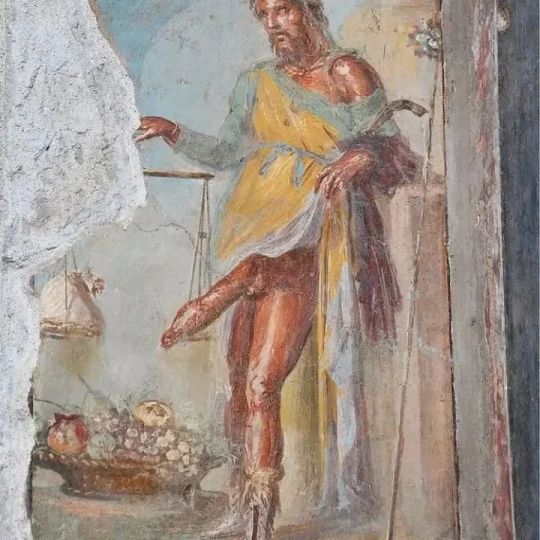
In Greek mythology, Priapus was a minor god of rustic fertility, protector of livestock, fruit plants, gardens, and male genitalia. Priapus is marked by his permanent and exaggerated erection, which gave birth to the medical term priapism. He has become a popular figure in Roman erotic art and Latin literature and is the subject of a collection of often obscene and humorous verse called the priapeia. The image is from the Casa dos Vetti, Pompeii. https://www.instagram.com/p/ClqCK29tRYY/?igshid=NGJjMDIxMWI=
0 notes
Photo
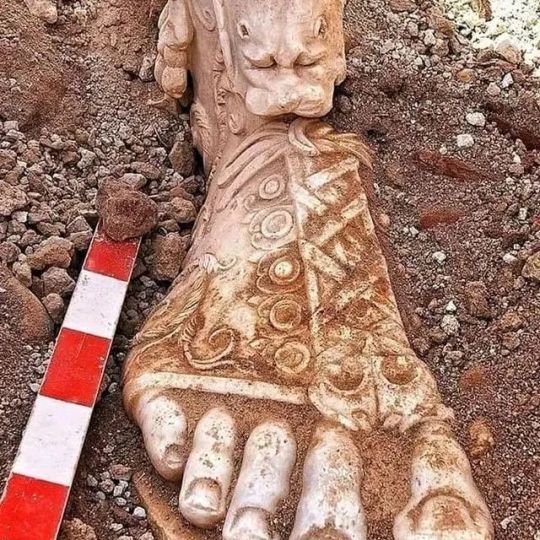
Lower part of a leg and foot with sandal of the over life size statue of Roman emperor Marcus Aurelius(reign 161-180 A.D.) found at Sagalassos,Turkey in 2008. https://www.instagram.com/p/Clnhs_FNDaw/?igshid=NGJjMDIxMWI=
0 notes
Photo

A young woman from Vedbaek, Denmark, buried with her newborn child who had been placed on the wing of a swan, 4000 BC. Vedbaek 'The swan's wing burial' Tomb 8 is the most famous of the burials, containing a young woman, who may have died in childbirth, and a premature baby. The symbolism of the baby on the swan wing has been much debated with suggestions including purity and a waterfowl's ability to transcend water, land, and air. Indeed, both bodies were cared for in death (the disordered state of the mother's ribs suggests that she may have been resting on an organic "pillow"), suggesting the belief that the spirit remained with the body. Illustration: Adam Brockbank #Ancient_Pompeii https://www.instagram.com/p/ClQR5USNzWi/?igshid=NGJjMDIxMWI=
6 notes
·
View notes
Photo
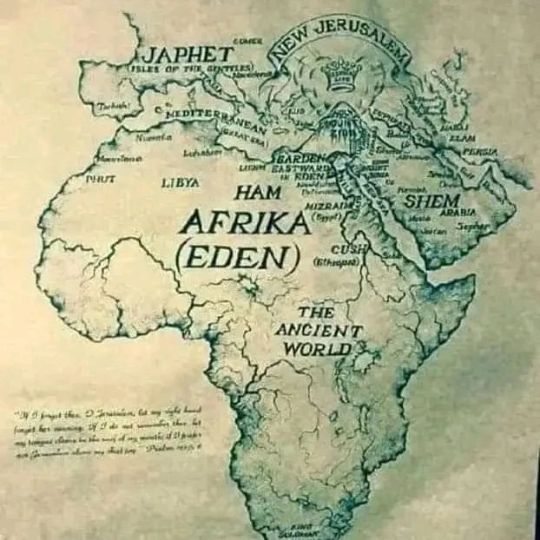
Ancient name of Africa Before the European settled for the word Africa, the continent was called many other names. They include Corphye, Ortigia,Libya, and Ethiopia, Alkebulan Other names such as the land of Ham (Ham means dark skins), mother of mankind, the garden of Eden, Kingdoms in the sky, and the land of cush or kesh (referring to the Cushites who were ancient Ethiopian) were used. No one knows the source of the names for sure. However, the theories below shed some light on how this second largest continent got its new name. Roman theory Some scholars believe that the word originated from the Romans. Romans discovered a land opposite the Mediterranean and named it after the Berber tribe residing within the Carnage area, presently referred to as Tunisia. The tribe's name was Afri. Weather theory Some believe that the name was coiled from the continent's climate. Deriving from aphrike, a Greek word that means a land free from cold and horror. A variation of the Roman word aprica, which means sunny, or even the Phoenician word afar, which means dust. Africus Theory This claims that the continent derived its name from Africus. Africus is a Yemenite chieftain who invaded the northern part in the second millennium BC,It is argued that he settled on his conquered land and named it Afrikyah. Phoenician Theory Another school of thought suggests that the name is derived from two Phoenician words friqi and pharika. The words mean corns and fruits when translated. Hypothetically the Phoenician christened the continent as the land of corns and fruits. Alkebu-lan “mother of mankind” or “garden of Eden”.” Alkebulan is the oldest and the only word of indigenous origin. It was used by the Moors,Nubians, Numidians,Khart-Haddans (Carthagenians) and Ethiopians. There is little or no certainty on the source or meaning Africa. Several scholars have tried to explain the origin of the word, but none is convincingly correct. https://www.instagram.com/p/ClLGvM-NuUE/?igshid=NGJjMDIxMWI=
3 notes
·
View notes
Photo

"Throne of a late 4th century BC Queen from a tomb at Aegae, Greece. Aegae or Aigai was original capital of Macedonians, an ancient kingdom in Emathia in northern Greece, also the burial-place of the Macedonian kings, now Vergina." https://www.instagram.com/p/ClKBi65tKZ9/?igshid=NGJjMDIxMWI=
0 notes
Photo
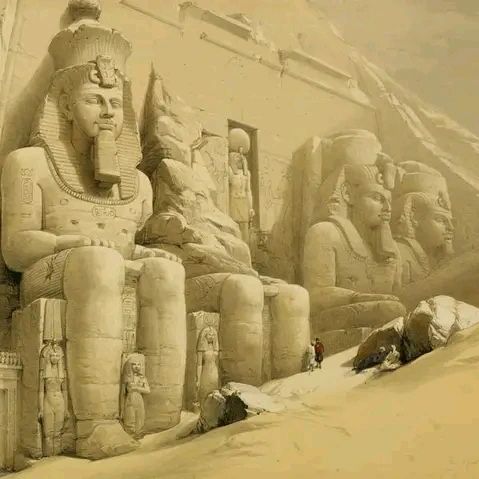
The Great Temple of Abu Simbel Nubia from Egypt and Nubia David Roberts - 1838 https://www.instagram.com/p/ClKAigRteDi/?igshid=NGJjMDIxMWI=
0 notes
Photo
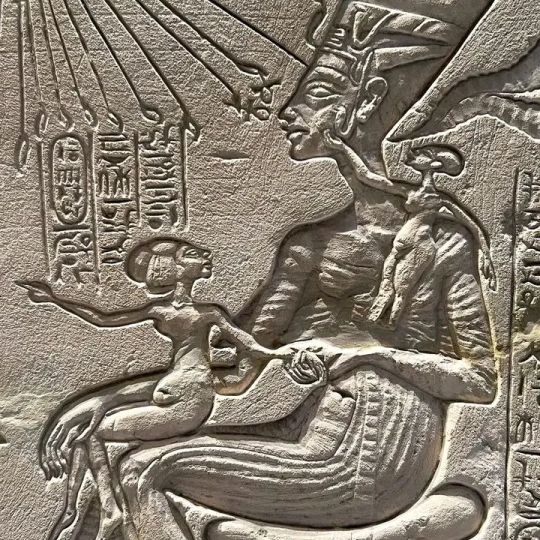
Stela of Akhenaten, Nefertiti and Daughters | New Kingdom | Dyn. XVIII | Tell el-Amarna | Limestone | Inv. No. ÄM 14145 at Neues Museum https://www.instagram.com/p/ClKAWRwN404/?igshid=NGJjMDIxMWI=
0 notes
Photo

Mummy of a Monkey Excavated by Mr. Theodore M. Davis in 1906 from Tomb (KV51) nearby the Tomb of Amenhotep II (Died: 1400 BC.), Valley of the Kings, West Thebes. Egypt at the Egyptian museum of Cairo Photo by: Zeinab Mohamed/flickr Animal mummification was common in ancient Egypt. They mummified various animals. It was an enormous part of Egyptian culture, not only in their role as food and pets, but also for religious reasons. This sad-looking young baboon is seated with its knees drawn up to its chest, and its tail curving around the right side of its body. The monkey appears to have been mummified through an enlarged cut in the anal area rather than evisceration through enema; radiographs show that a series of large packets that appear to contain soil were inserted into the animal’s torso to help hold its original shape. Traces of resin, natron, and exterior bandages are still visible on the animal. https://www.instagram.com/p/ClIkMesNDhx/?igshid=NGJjMDIxMWI=
0 notes
Photo
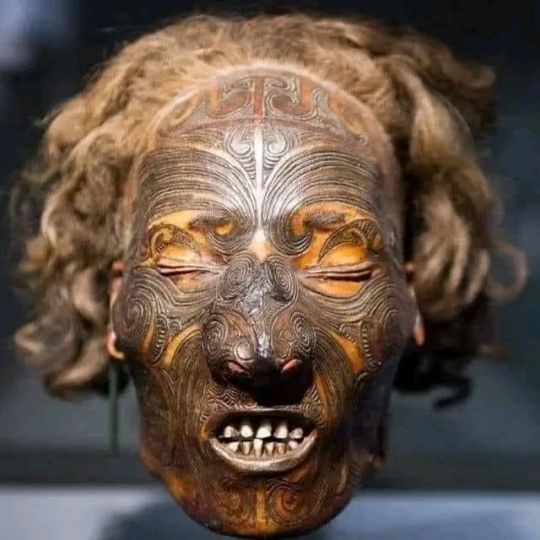
Mummified Head (Mokomokai); with Moko facial tattoo. (Maori culture; 10-800 AD), New Zealand. https://www.instagram.com/p/ClIj_gTtHv7/?igshid=NGJjMDIxMWI=
1 note
·
View note

